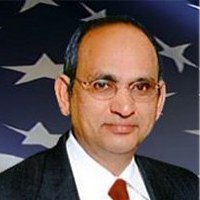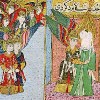![]()
Wed, Dec 29, 2010 | WikiLeaks
WikiLeaks: Indian Muslims Reject Extremist Creeds
A briefing on India’s 150 million Muslims – and why they prefer moderate, mainstream denominations of the faith.
Source: WikiLeaks
Friday, 02 December 2005, 12:54
C O N F I D E N T I A L SECTION 01 OF 06 NEW DELHI 009127
SIPDIS
SIPDIS
EO 12958 DECL: 11/30/2015
TAGS KISL, PGOV, KDEM, PINR, PTER, SCUL, IN
SUBJECT: INDIA’S DEMOCRACY AND ECONOMY MINIMIZE EXTREMIST
RECRUITMENT OF JUVENILES (C-CT5-00623)
REF: STATE 211901
NEW DELHI 00009127 001.2 OF 006
Classified By: POLCOUNS Geoffrey R. Pyatt for Reasons 1.4 (B, D)1. (C) India’s over 150 million Muslim population is largely unattracted to extremism. India’s growing economy, vibrant democracy, and inclusive culture, encourage Muslims to seek success and social mobility in the mainstream and reduces alienation. With Indian Muslim youth increasingly comfortable in the mainstream, the pool of potential recruits is shrinking, while Muslim families and communities provide little sanction or support to extremist appeals. This cable is in response to Reftel requesting information on methods used by extremist groups to recruit and train youths under the age of 18. Post notes that India is home to a wide variety of extremist groups, including religious extremists (Hindu, Muslim and Sikh), ethnic separatists, and extremists from the political left (Naxalites) and right (primarily Hindu fascists), all of whom recruit children. However, reftel requests information only on Islamic extremist groups such as Al-Qa’ida, Ansar al-Sunnah, the Abu Sayyaf Group (ASG), the Taliban and Kashmiri militants, and we will confine our analysis to such groups.
The Muslim Minority
——————-
2. (C) According to India’s 1991 National Census, the Muslim population constitutes just under 15 percent of the country’s total. It grew by 33 percent between 1981-2001, while the general population increased by 24 percent. Islam is India’s largest minority religion. In many towns and cities, particularly in Northern India, one third or more of the population is Muslim. The largest concentrations of Muslims live in the states of Bihar (12 million), West Bengal (16 million), and Uttar Pradesh (24 million). The overwhelming majority (92 percent) are Sunnis, the remainder being Shias. India’s Muslim population is estimated to be as large as 150 million (the second largest in the world after Indonesia), and suffers from higher rates of poverty than most other groups in India, and can be the victims of discrimination and prejudice. Despite this, the vast majority remain committed to the Indian state and seek to participate in mainstream political and economic life. Only a small number of young Muslims have concluded that mainstream politics will never address their grievances and have gravitated toward pan-Islamic and pro-Pakistan organizations, which sometimes engage in acts of violence. India’s vibrant democracy, inclusive culture and growing economy have made it easier for Muslim youth to find a place in the mainstream, reduced the pool of potential recruits, and the space in which Islamic extremist organizations can operate.
A Vibrant Democracy
——————-
3. (C) Although there are a wide variety of Islamic religious, political and social organizations, most Muslims join or support secular groups without a specific Islamic identity. The ruling United Progressive Alliance (UPA), spearheaded by Congress, projects itself as the secular alternative to the opposition National Democratic Alliance (NDA), dominated by the Hindu-nationalist BJP. Muslims generally join secular parties as the best way to ensure that the BJP does not attain political power, although the BJP
NEW DELHI 00009127 002.2 OF 006
does have Muslim members as well. No exclusively Muslim organization has succeeded in mobilizing more than a small portion of the Muslim faithful. Muslim organizations that support terrorism against the Indian state and non-Muslim Indians are very small and lack influence or popular following outside of Kashmir. India’s vibrant democracy has ensured that the large Muslim community has a voice in politics and recent elections have demonstrated that Muslim voters are courted actively by political parties. With a Muslim President (Abdul Kalam) occupying the highest political position in the country, Muslims have been encouraged to seek political power in electoral and parliamentary politics, all but eliminating the appeal of violent extremism.
Growing Economy
—————
4. (C) India’s secular education system increasingly integrates Muslim students into the mainstream and has spawned a growing and prosperous Muslim middle class. Muslims, like Indians generally, rely on education and English language competence to provide access to increased job opportunities. In the past, extremist groups focused on Indian universities as potential recruiting grounds, but the economic upturn has transformed this dynamic. Most Muslims approaching graduation from University will be prepared to enter the job market and are not interested in extremism. This cuts down the time when Muslim students are vulnerable to extremist recruitment and compels extremist organizations to target younger students. Economic growth has spawned dramatic social change and Muslim extremists must find potential recruits who have not yet participated in or benefited from the economic boom, consumer capitalism and the attractions of the media. These groups are likely to reject any recruit who has already been enticed away from Islamic separatism into secular values.
And an Inclusive Culture
————————
5. (C) In order for Islamic extremism to be attractive to Indian Muslim youth, they would have to feel alienated from the mainstream culture. While Muslims are often victimized and discriminated against, traditional barriers to cultural integration are breaking down. Young and dynamic Muslims are popular culture heroes in sports (Sania Mirza) and Bollywood (Sharrukh Khan and many others). The message for young Muslims is that they are Indians first and Muslims second, and that they can fully participate in Indian society and culture and win the adulation and respect of other Indians, regardless of religion.
Kashmir – The Exception
———————–
6. (C) Jammu and Kashmir, India’s only Muslim majority state, is characterized by a different kind of political Islam. Kashmiri Muslims, like many of their counterparts throughout South Asia, have been historically heavily influenced by Sufi Islam, but because of their majority status and geographic isolation in a remote princely state, never saw themselves as part of the Islamic mainstream in pre-partition India. Kashmiri Muslims have worked actively to maintain a separate identity and have resisted
NEW DELHI 00009127 003.2 OF 006
integration. This has been compounded by the turbulence and terrorism that have engulfed the state since 1989. The Kashmiri sense of separateness permeates the programs and manifestos of Kashmir’s Islamic groups, and Kashmiri Muslims have not embraced Indian Muslims’ aspirations for national integration. Moreover, many Kashmiri Muslims have parted company with their Indian Muslim counterparts and embraced Wahhabi Islam during the insurgency. While Indian Muslims feel compelled to express support for their co-religionists in Kashmir, they tend to look upon Kashmiris with suspicion and try to keep the Kashmiri cause at arm’s length.
The Extremists
————–
7. (C) Separatism and religious extremism have little appeal to Indian Muslims, and the overwhelming majority espouse moderate doctrines. While the conservative Sunni political organization the Jamaat Islami (JI) and the Deobandi sect espouse Islamic chauvinism, and some of their members express admiration for Osama bin Ladin, their leaders usually do not express such views in public, and there is little to indicate that they have provided anything more than rhetorical support to terrorists. Attacks by Hindu extremists on innocent Muslims and periodic bouts of bloody communal rioting, have led a small number of Muslims to cross the line from sympathizing with violence to engaging in terrorism. Some Kashmiri terrorist groups argue that only attacks outside of Kashmir will shake the Indian state and convince the GOI to withdraw. Members of these two small slivers of the Muslim community provide recruits for groups prone to acts of violence and terrorism, many of which are supported from outside India. The numbers are small, especially outside of Kashmir, but they remain capable of periodic bombings and other acts of violence.
8. (C) Indian Islamic groups that are extreme in their views and activities include
Students Islamic Movement of India (SIMI) Jamiat-ul-Mujahideen Marqazi-Jamiyat-e-Ahal-e-Hadith (MJAH) Muslim United Liberation Front of Assam (MULFA) Muslim Security Council of Assam (MSCA) Muslim Volunteer Force (MVF) Muslim Liberation Army (MLA) Muslim Security Force (MSF) Islamic Sevak Sangh (ISS) United Muslim Liberation Front of Assam (UMLFA)
9. (C) In addition, the Lashkar-e-Toiba (LeT) and the Jaish-e-Muhammad (JeM) are Pakistan-based groups which recruit Indian Muslims. Hizbul Mujahideen is a Kashmiri terrorist group which works closely with the Pakistan-based organizations. The MJAH is a nationwide organization for Muslims who subscribe to Wahhabi Islam. Since the overwhelming majority of Indian Sunnis belong to the more liberal Barelvi and Deobandi schools, the Wahhabi sect has relatively few adherents, and only a small segment of Indian Wahabis endorse the MJAH and its views. The group is very small and press accounts have periodically linked it to bombings, most recently in Mumbai. SIMI was originally founded to provide spiritual guidance to Muslim university students, but drifted into extremist politics and terrorism, and was subsequently banned by the GOI in 2001. Individual
NEW DELHI 00009127 004.2 OF 006
SIMI members are periodically arrested and prosecuted, but the group is largely dormant. LeT and JeM have cells in India which have committed terrorist attacks, primarily in J & K, but elsewhere as well. The GOI has stated that the LeT is the principal suspect in the recent deadly bombings in Delhi, which killed over 70 persons. Most Indians, both Muslim and non-Muslim, view members of these groups as subversive agents of a hostile power, Pakistan.
Answers to Specific Questions
—————————–
10. (C) Question A — Recruitment
As explained above, there are two distinct threads of Islamic extremism in India, which can overlap, but are largely separate; Kashmiri groups, which are both Islamic and ethnic, and non-Kashmiri groups, which emphasize a primarily religious identity while Kashmiri groups have recruited boys under the age of 18, other extremist groups have concentrated on University students, who are often above the age of 18. Kashmir has been embroiled in terrorism for decades, exposing children to violence at an early age. Decades of conflict, a high casualty rate, and war-weariness has shrunk the pool of recruits for Kashmiri terrorist groups and they have turned to younger boys.
11. (C) Most experts believe that terrorism in Kashmiri is now largely a non-Kashmiri affair. A study by a private think tank on recruitment into Indian terrorist organizations verified that Kashmiri terrorist groups are the only Islamic groups specifically to recruit juveniles. The report claims that children have participated in terrorist attacks in Kashmir since the early 1990s, when there were documented cases of juveniles throwing grenades at security force pickets. Inspector-General of Police K. Rajendra said in October 2003 that perhaps only a handful of children have been involved in actual incidents, that in 2002 the Kashmir police knew of the recruitment of approximately 100 child recruitments, and that the number increased to approximately 500 in 2003. According to the study, the terrorist groups have evolved a specific method of juvenile recruitment. A ‘scout’ or ‘overground worker’ surveys an area and identifies boys from poor families within the target age group. On a given day, the terrorists abduct the identified targets at gun-point and take them to a hideout. The groups target schools, as exemplified in July 2003, when a LeT recruiter walked into the playground of the National High School at the small Bandipora village of Vijhar in the Baramulla district. Security forces subsequently rescued a group of six children from the LeT ‘scout.’ Some of the rescued children had repeatedly failed school examinations and others had dropped out to take unpaid apprenticeships in dead-end jobs. Police assert that families are coerced to ‘donate’ a younger son to the ‘jihad’ and that refusal to comply could result in the death of the entire family. Since 2003, the border has become less porous, the appeal of joining terrorist groups has diminished, and there are fewer media accounts of child abductions and rescues.
12. (C) Some prominent instances demonstrating patterns of child recruitment include:
–On 6 August 2001, security forces intercepted three terrorists forcibly taking 12 young boys at gunpoint to
NEW DELHI 00009127 005.2 OF 006
Pakistan for training and induction into their ranks. As the young boys ran towards the security forces for safety, the terrorists fired on them killing one boy and injuring another, the security forces rescued the remainder.
–In July-August 2001, security forces rescued 39 young boys in the age group of 14-18, being taken at gun point to Pakistan for training.
–In 2003, an estimated 500 teenagers were recruited into various terrorist outfits in J&K. The child recruits received rudimentary arms training, but primarily worked as cooks, cleaners, porters and guides for terrorists
13. (C) Outside of Kashmir, Islamic organizations in Indian universities have some success recruiting Muslim students, many from rural backgrounds and away from home for the first time. Those who stay with such groups can become increasingly isolated from the mainstream and are attractive recruits for Islamic extremists. Our contacts tell us, however, that most Muslim students lose interest in such groups as they become more comfortable in their new environments. The Indian media has published colorful stories implying that Madrassas are recruiting centers for Islamic terrorism and that many are funded by Pakistan’s ISI. The accounts are mostly anecdotal, however, and there has been little or no hard evidence linking Indian Madrassas to terrorist recruitment. Madrassas originally started at the secondary level and were confined to boys, with most Muslim children attending public primary schools in their own villages. The Deobandi sect is establishing a series of primary schools for North Indian boys and girls. Their goal is to provide madrassa education for children from age five through university level. There is some concern that this move could isolate children from the mainstream and make them more prone to extremism or susceptible to recruitment into terrorist groups.
question B — Characteristics of Recruits
14. (C) Muslim contacts tell us that young recruits in Kashmir are those who have been brutalized by violence, lost loved ones, or have personally experienced repression by the Indian security forces. Many are bent on revenge. As in most war-torn areas, children brutalized by their environment can begin to see violence as a normal career path and can divorce it from any ideological justification. Non-Kashmiri recruits are said to be primarily from blue collar or poor families with limited education and from a rural or urban slum background. They can find higher education to be a painful process and have trouble adjusting to a radically different environment, and can embrace radical Islam as a coping mechanism, as the Islamic groups welcome them and provide them with a warm and familiar environment. In Gujarat and Western India, particularly in Mumbai, many Muslims were traumatized by anti-Muslim rioting following the destruction of Babri Mosque in 1992, and the Godhra train violence of 2002. We speculate that their principal motivation is revenge for senseless and painful attacks inflicted on them, their families, and their communities by Hindu extremists.
question C — Juveniles and the Advancement of Terrorist Goals
15. (C) Kashmiri groups, facing a limited manpower pool and
NEW DELHI 00009127 006 OF 006
heavily outnumbered by the Indian security forces, have seen a harsh attrition as their members are killed, imprisoned, or fall away. Like terrorist groups in other countries facing a similar dilemma (the LTTE in Sri Lanka for example), they have recruited younger and younger members. In addition, Kashmiri adults have largely tired of violence and extremism and are less receptive to terrorist recruitment. In such an environment, children are more pliable and less resistant. They can also provide a lifetime of service, in a conflict that seems to go on without end. Other Islamic extremist groups have a similar dilemma, in that Islamic extremism is not popular in India and most adults are not interested. This forces extremists to pitch to young and naive audiences who may be more amenable.
question D — Rehabilitation Methods
16. (C) Since there is relatively little recruitment of juveniles into extremist groups, especially outside of Kashmir, there is no GOI program aimed specifically at rehabilitating them. We know of no instances where child terrorists have been captured. In those instances where abducted children are rescued, the security forces return them to their parents.
question E — Reasons why Extremists May Refrain from Juvenile Recruitment
17. (C) Kashmir has had the most experience with recruitment of juveniles into extremist groups. Enthusiasm there for the separatist/terrorist cause has largely waned, and the organizations there are concerned that they could become totally isolated and liable to be crushed by the security services if their popular support dries up. Cost benefit analysis would convince most such groups that the cost of losing support from the local community is too high for the small benefit provided by youthful recruits. Outside Kashmir, Muslims are facing the same pressures for social mobility as non-Muslims. Most Indian children are under pressure to get into school, stay in school, and perform well there, in order to obtain higher education and access to well-paid jobs. Attempts by extremist groups to recruit children from Muslim homes are likely to run into a wall of opposition from parents who would see involvement in extremism as counterproductive and a threat to future success of their children. This means that extremism is most attractive to children from families that are so poor that opportunities for education and advancement are all but non-existent. As the Indian economy continues to boom, the percentage of Muslim families who feel there is no hope for their children’s’ future is growing smaller, as is the pool of potential recruits. MULFORD



 RSS
RSS












#WikiLeaks: #Indian #Muslims Reject #Extremist #Creeds | http://j.mp/gsitt4
RT @CrethiPlethi: #WikiLeaks: #Indian #Muslims Reject #Extremist #Creeds | http://j.mp/gsitt4
RT @CrethiPlethi: #WikiLeaks: #Indian #Muslims Reject #Extremist #Creeds | http://j.mp/gsitt4